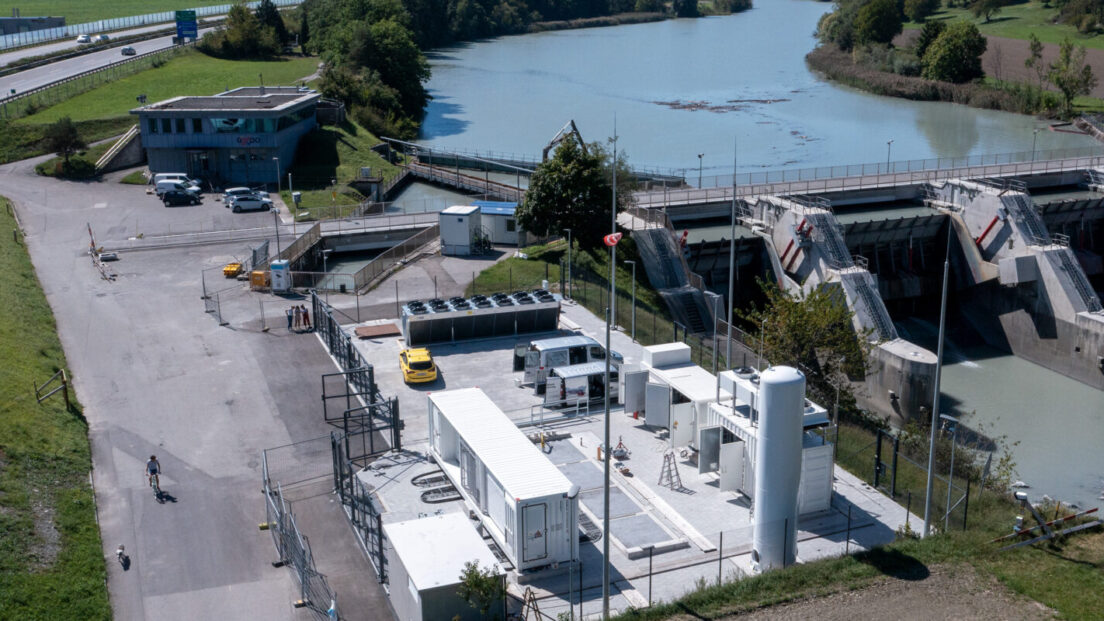Hydrogen project a location with potential

The current Online Home Market Analysis shows: On average, a single-family home was advertised on the Swiss real estate portals studied for 66 days, six days longer than in the previous period. At the same time, the number of advertisements also increased by around ten percent. This indicates robust demand throughout Switzerland, despite a simultaneous increase in mortgage rates by almost two percentage points and weaker overall economic performance. A closer look, however, reveals large regional differences.
The location in Domat/Ems, directly next to a main traffic axis in the Swiss Alps and in the immediate vicinity of electricity producers and an electricity plant operator, is creating a pioneering hydrogen project. Especially for HGVs that need to refuel with hydrogen at strategic junctions, the location in the Graubünden Rhine Valley is of great value.
The technical performance spectrum of the newly planned facility is impressive: At full capacity, the 2 MW plant can generate over 300,000 kg of hydrogen per year. This corresponds to the energy content of 1,000,000 litres of diesel. Such a production rate not only affects the diversity of energy sources, but can also have a significant positive impact on the environment by reducing annual CO2 emissions by more than 3,600 tonnes.
Energy storage as the biggest challenge
Renewable energies have been the talk of the town for some time. However, storing them brings some challenges, especially because nature dictates when and how much energy is produced. This is where hydrogen comes on the scene as an optimal storage element. Especially in times of high energy production in summer, it can be advantageous to convert surplus electricity into hydrogen. However, constant production is essential for profitable operation. Current legal requirements suggest that such plants should be built near energy production sites.
The first considerations in this direction were initiated in 2017. Soon after, Fanzun AG’s team of experts set out to find a suitable location. Urs Simeon, partner and project manager, expressed: “We were aware that the topic of hydrogen requires a lot of education. That’s why we started looking into it intensively at an early stage and were able to quickly build up comprehensive expertise.” According to Simeon, the biggest hurdle in the planning phase was the economic calculation – because the project only makes sense if it is economically viable.
In the beginning there was a Norwegian investor
When searching for the roots of this project, one comes across the name of Per Sandven, a visionary investor from Norway known for his pioneering and sustainable approaches. Sandven, as co-founder and former main shareholder, played a central role in the foundation and development of Calanda Solar. He also had a significant influence on the implementation of the adjacent Calinis photovoltaic project. This project, located in the former quarry of Felsberg and operated by Rhiienergie, was the largest photovoltaic facility in the canton of Graubünden in 2020. With a remarkable annual yield of 1,500,000 kWh, it supplies electricity to about 400 households.
Further projects are in the pipeline
In the past, Sandven and Fanzun have already worked hand in hand, for example on the 105%-PlusEnergie Hotel Muottas Muragl in Samedan, which also won a solar prize. Their cooperation illustrates the shared aspiration and vision to drive the change towards a more environmentally friendly and climate-neutral energy future. Fanzun AG is currently planning additional initiatives in the high-mountain solar segment, also known as the “Solarexpress”.